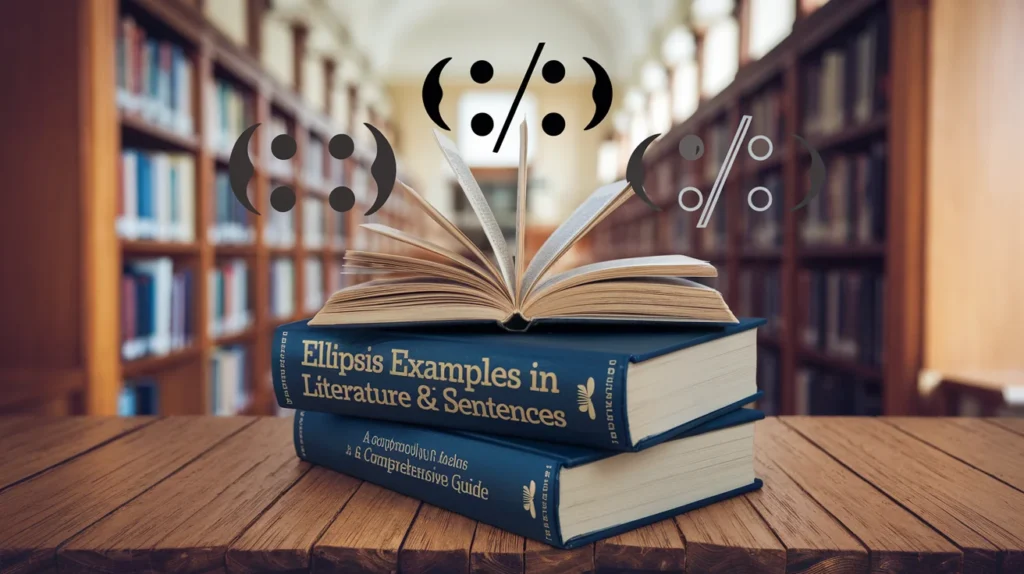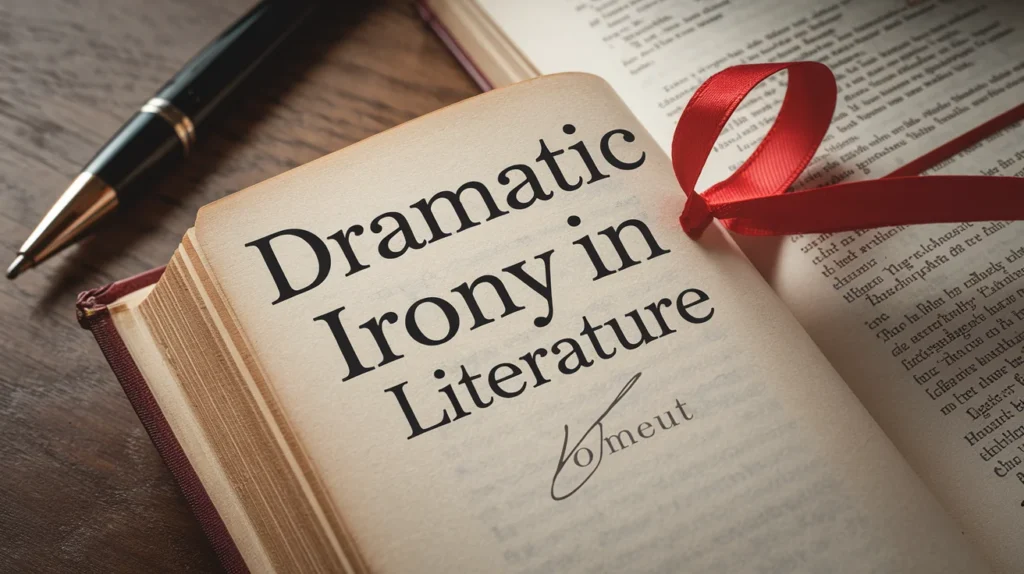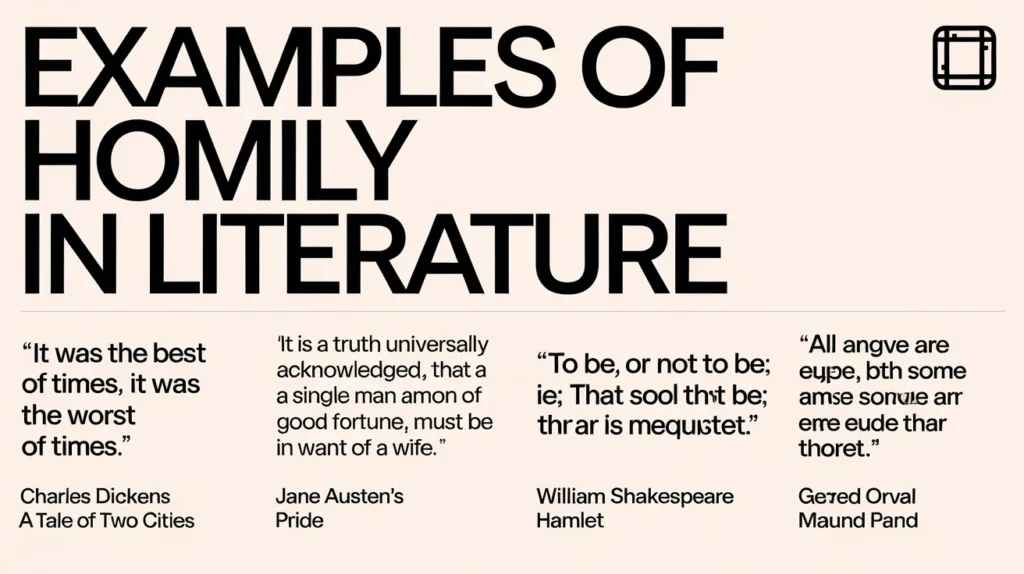Have you ever noticed those three little dots (…) in a book, a text message, or even an academic paper? That’s called an ellipsis, and it serves more than just one purpose. Writers use ellipses to create suspense, omit unnecessary words, or mimic natural speech. From Shakespeare to Hemingway, some of the most legendary authors have used ellipses to enhance storytelling and engage readers. But how do you use them correctly? And how do they impact literature and everyday writing? In this guide, we’ll break down the meaning, function, and real-world applications of ellipses. You’ll see examples in famous literature, sentences, and dialogue, and even learn how they compare to other punctuation marks. Let’s dive in!
What Is an Ellipsis?
Definition and Structure
An ellipsis is a set of three dots ( … ) used to indicate an omission, pause, or trailing thought. It can appear in formal and informal writing, though its rules vary based on the context.
| Symbol | Meaning |
| … | Standard ellipsis (used in English writing) |
| . . . | Spaced ellipsis (used in some academic formats) |
Common Misconceptions
- Ellipses are not always pauses – They can also remove redundant words.
- They don’t always indicate hesitation – In academic writing, they streamline quotes.
- More than three dots is incorrect – Some mistakenly add extra dots (……), but the correct form is always three dots.
Functions of Ellipsis in Writing
Ellipses are incredibly versatile and serve multiple purposes in both literature and everyday writing. Here’s how they function:
1. Omission of Words
Ellipses can remove unnecessary words to keep writing concise.
Example:
- Original: “She said, ‘I am going to the store, and I will buy some apples, oranges, and bananas.'”
- With Ellipsis: “She said, ‘I am going to the store… and buy some apples.'”
2. Creating Suspense and Dramatic Pauses
In storytelling, ellipses create mystery and tension.
Example:
- “He turned the corner and saw… nothing.”
3. Implying Trailing Thoughts or Hesitation
In dialogue, ellipses show uncertainty or hesitation.
Example:
- “I don’t know… maybe we should wait.”
4. Streamlining Quotes in Academic and Journalistic Writing
Ellipses shorten quotes while maintaining the original meaning.
Example:
- Original Quote: “The study concluded that while the vaccine was effective, certain age groups displayed different immune responses.”
- With Ellipsis: “The study concluded that… certain age groups displayed different immune responses.”
Ellipsis Examples in Sentences
Here are various sentence examples showcasing ellipsis usage:
In Casual Writing
- “I thought you were coming… but I guess not.”
- “I was thinking we could go to the movies… or maybe dinner?”
In Suspenseful Writing
- “She opened the door and saw…”
- “His voice trailed off…”
In Dialogue
- “I don’t know… maybe you should ask her.”
- “Wait… did you hear that?”
Ellipsis in Literature: Famous Examples
Many renowned authors have used ellipses to enhance their narratives. Below are real-world literary examples:
1. William Shakespeare – “Macbeth”
“To be thus is nothing…”
2. Jane Austen – “Pride and Prejudice”
“If I had ever learnt…”
3. Ernest Hemingway – “The Old Man and the Sea”
“You are killing me, fish…”
4. F. Scott Fitzgerald – “The Great Gatsby”
“So we beat on…”
5. Virginia Woolf – “Mrs. Dalloway”
“She would buy the flowers herself…”
Ellipsis vs. Other Punctuation Marks
Many confuse ellipses with other punctuation marks. Here’s a quick comparison table:
| Punctuation | Usage |
| Ellipsis (…) | Omits words, creates suspense, shows trailing thoughts |
| Em Dash (—) | Emphasizes a break in thought |
| Comma (,) | Separates clauses and lists |
Related Literary Devices & Concepts
Ellipses connect with other literary techniques, such as:
1. Suspense
- Used to build anticipation in storytelling.
2. Stream of Consciousness
- Mimics natural thought flow, as seen in James Joyce’s “Ulysses”.
Conclusion
Ellipses may seem like a small punctuation mark, but they shape tone, pacing, and clarity in writing. Whether you’re an author, a student, or a casual writer, mastering ellipses will make your writing more effective and engaging. Keep practicing, and soon, you’ll be using them effortlessly!
Frequently Asked Questions (FAQs)
1. When should I use an ellipsis?
Use an ellipsis to omit words, create suspense, or show hesitation in speech.
2. How many dots are in an ellipsis?
Always three dots (…), unless ending a sentence, where a fourth dot (period) may be added.
3. Can I overuse ellipses?
Yes! Overusing ellipses can make writing unclear and disjointed.
4. How is an ellipsis different from an em dash?
An ellipsis suggests an unfinished thought, while an em dash creates emphasis.
5. Do ellipses work in formal writing?
Ellipses can be used in academic writing, especially for condensing quotes.


